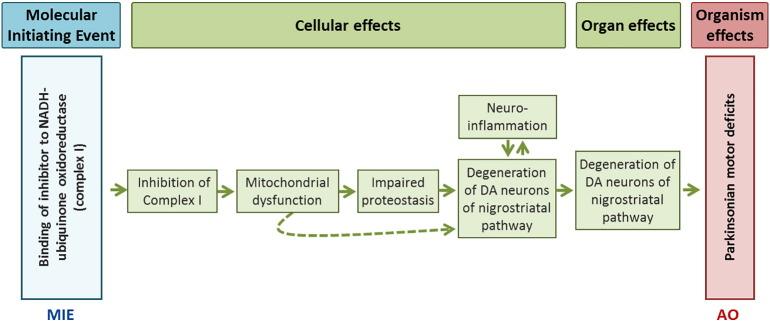
JRC scientists have been collaborating with EFSA experts on the development of an Adverse Outcome Pathway to establish the biological plausibility of an association between exposure to pesticides and Parkinson's disease.
Multiple epidemiological studies suggest that exposure to pesticides may present a potentially important environmental risk factor for developing Parkinson's disease (PD). To verify this hypothesis, JRC scientists worked together with international experts convened by the European Food Safety Authority (EFSA) to determine whether such an association could be supported based on existing scientific knowledge.
The result is an Adverse Outcome Pathway (AOP) endorsed and published by the Organisation for Economic Cooperation and Development (OECD) which describes the mechanistic basis of the association and the underpinning scientific evidence.
In this AOP, the molecular initiating event was identified as the binding of an inhibitor (in this case the active pesticide ingredient, rotenone) to mitochondrial complex I which triggers a cascade of key events at the cellular and tissue level resulting in the onset of parkinsonian motor deficits (e.g. tremor, limb rigidity or balance problems).
In addition, this work demonstrates how the AOP framework is applicable not only to regulatory toxicology but also serves as a tool for better understanding of mechanisms involved in the aetiology of complex diseases.
The knowledge captured in this AOP is expected to inform risk assessment in a variety of ways, including the design of Integrated Approaches to Testing and Assessment (IATA) based on human-relevant, non-animal methods that can be used to screen chemicals that are potentially hazardous to the nervous system of adults and children.
Read more in: Bal-Price, A., et al. (2018), "Adverse Outcome Pathway on Inhibition of the mitochondrial complex I of nigro-striatal neurons leading to parkinsonian motor deficits", OECD Series on Adverse Outcome Pathways, No. 7, OECD Publishing, Paris,
Related Content
Details
- Publication date
- 12 April 2019
